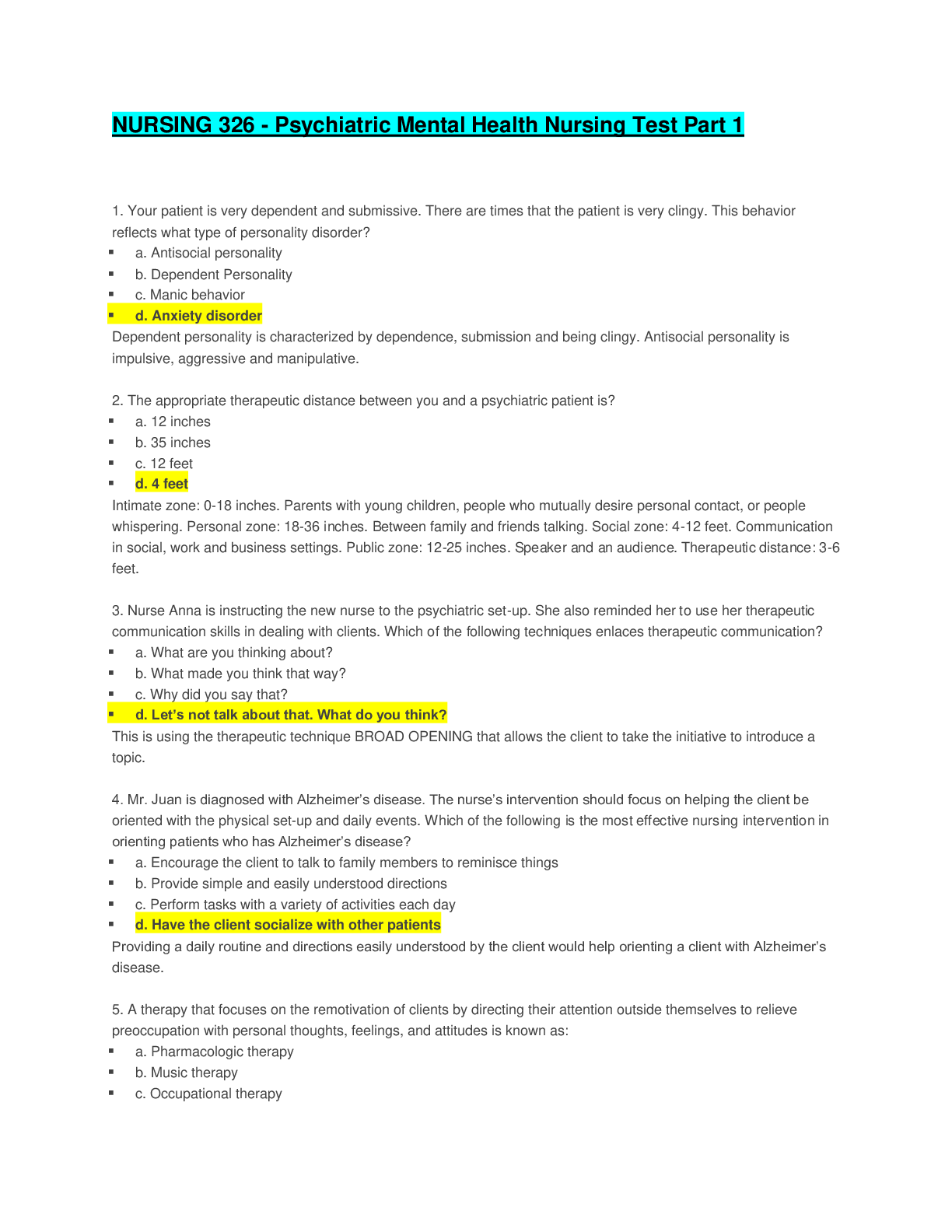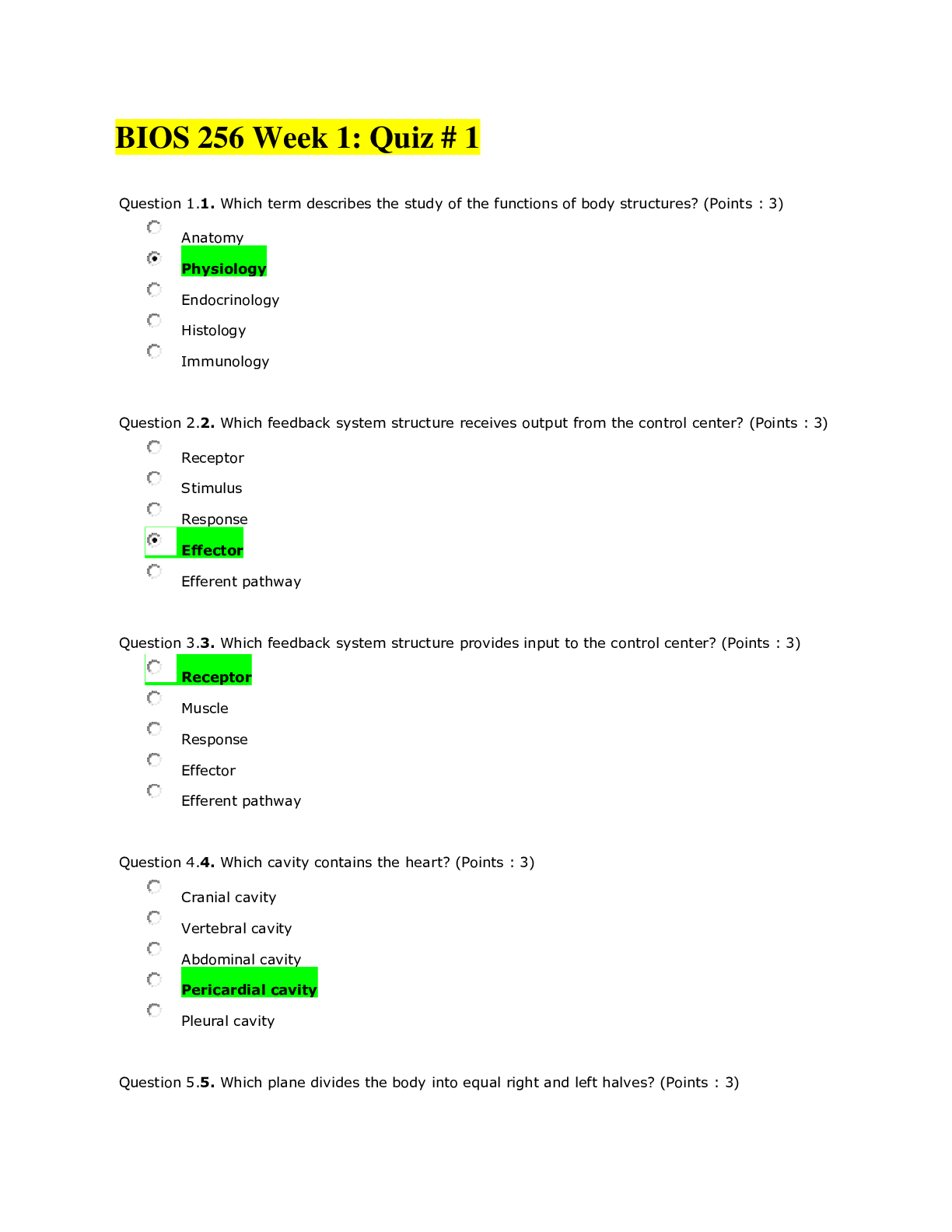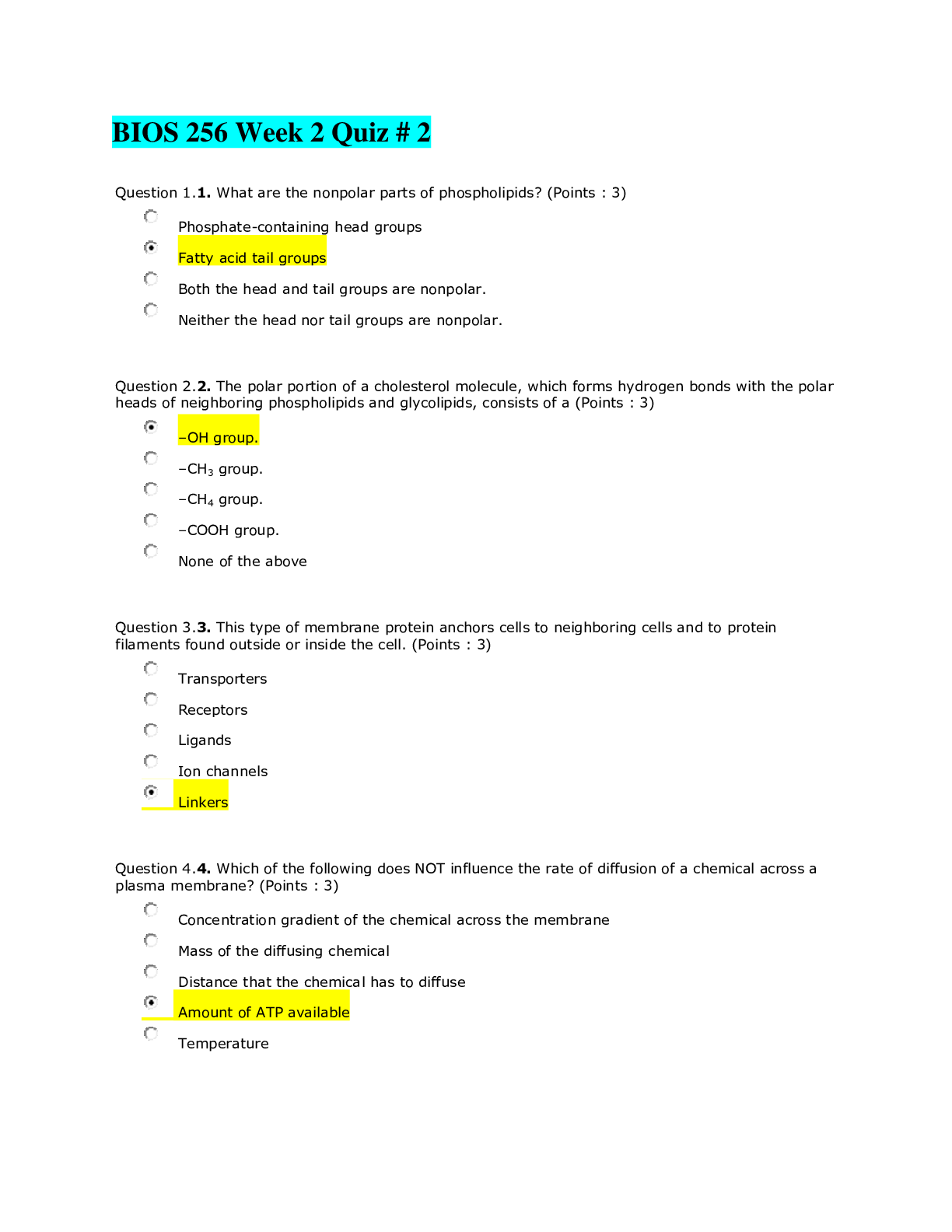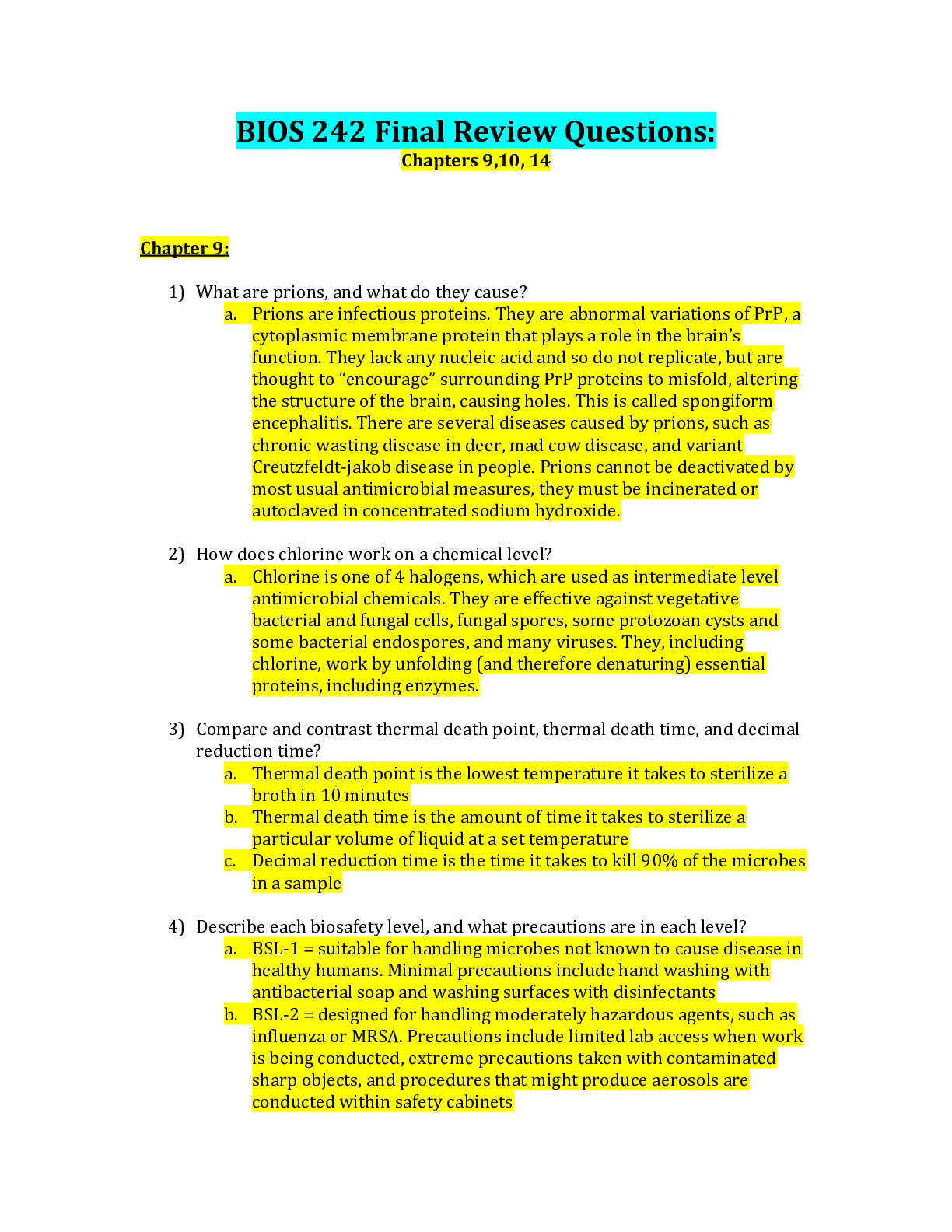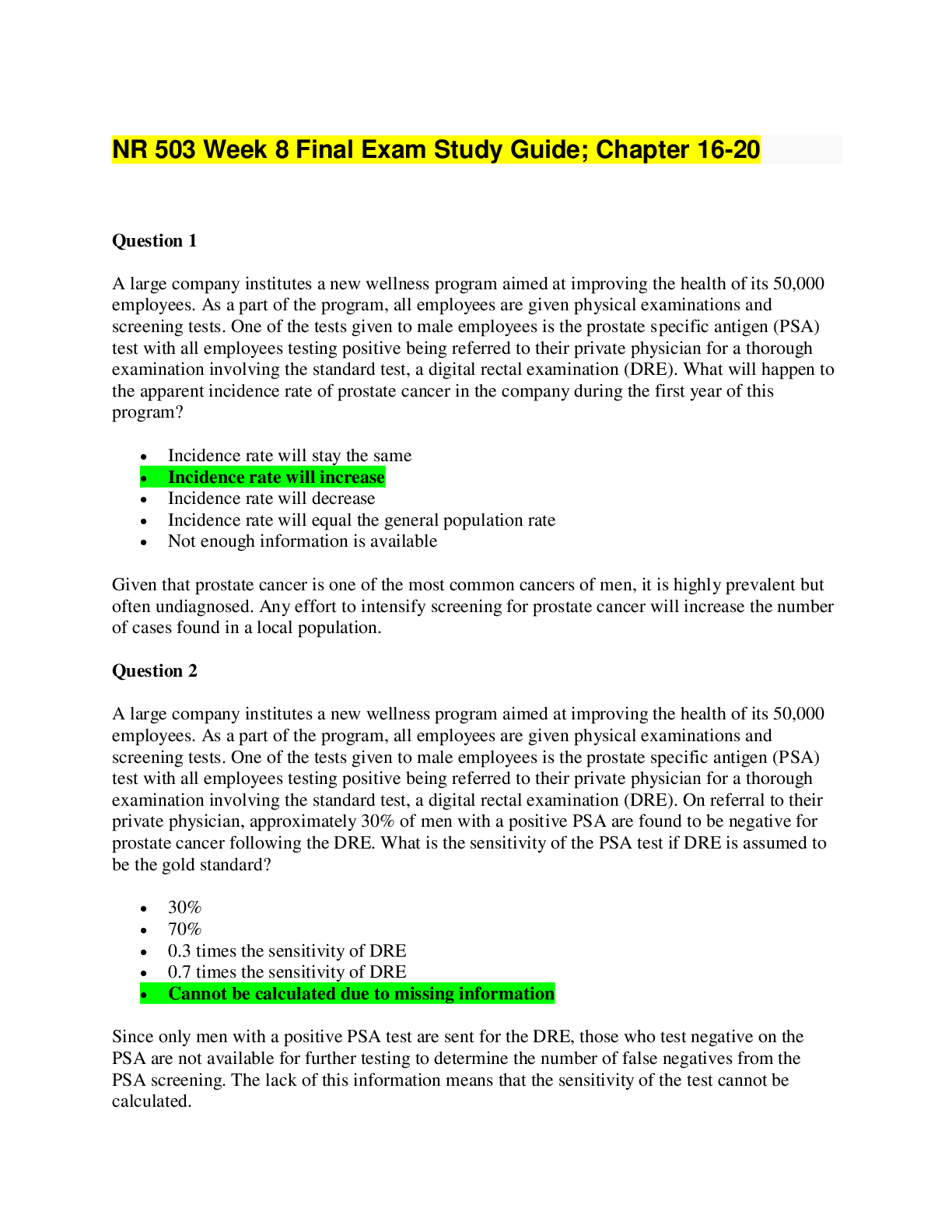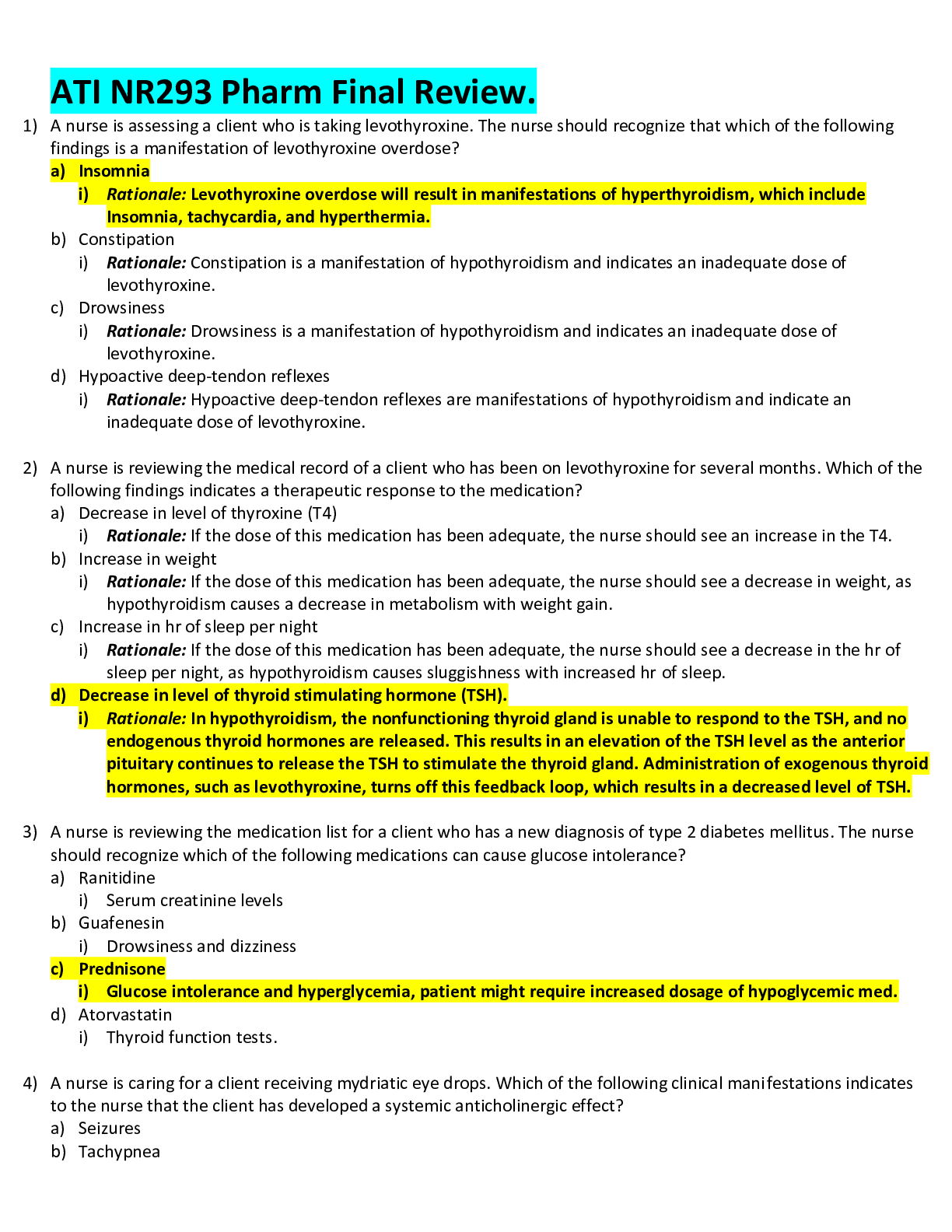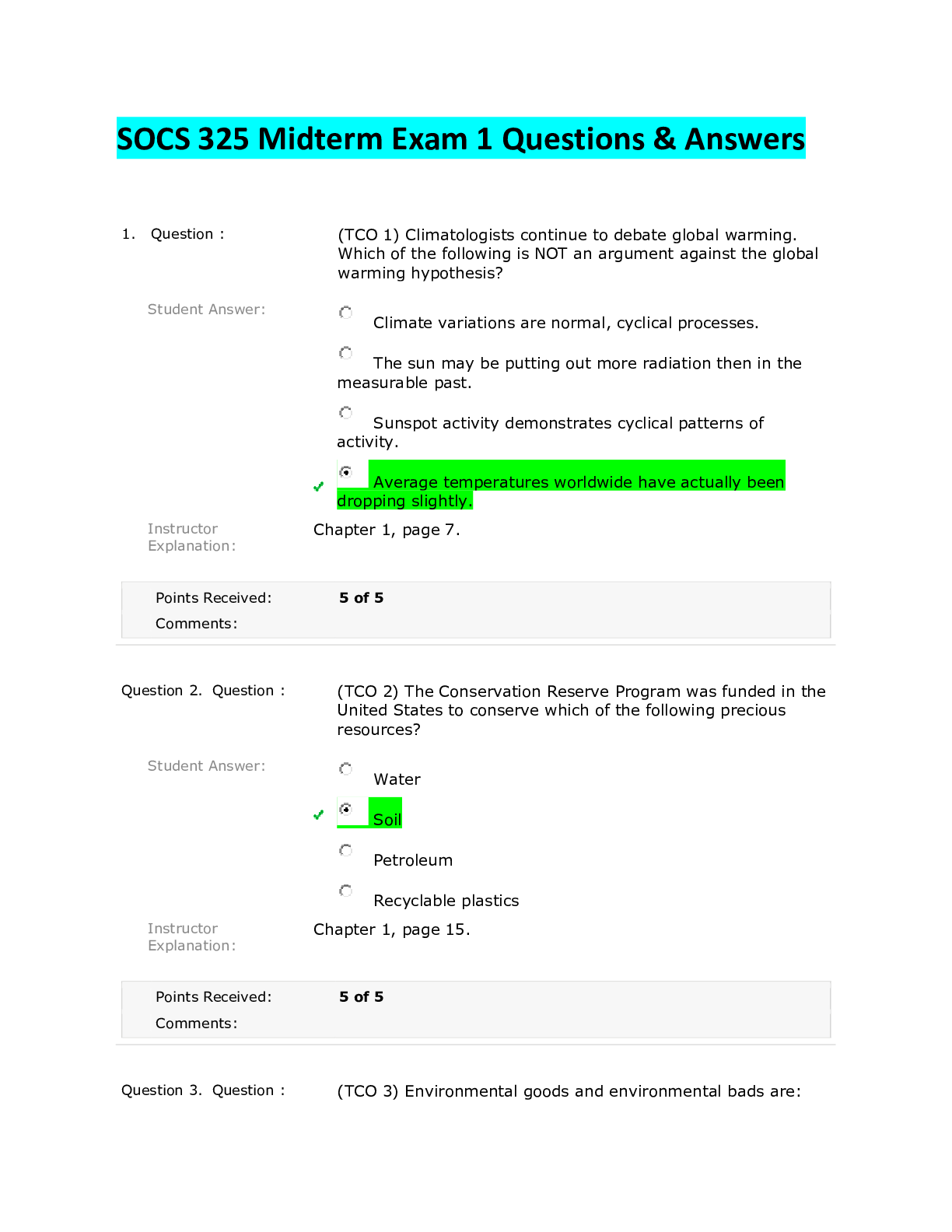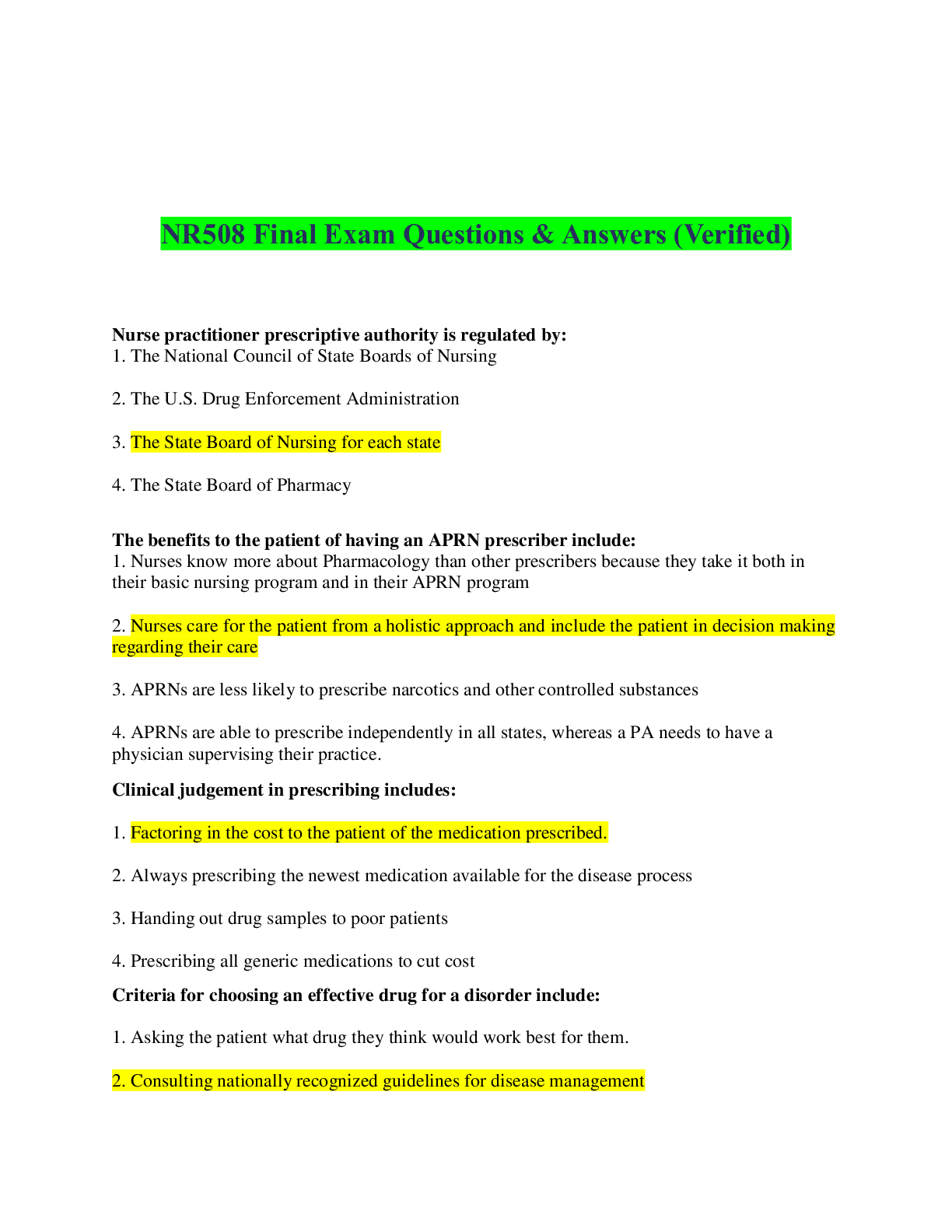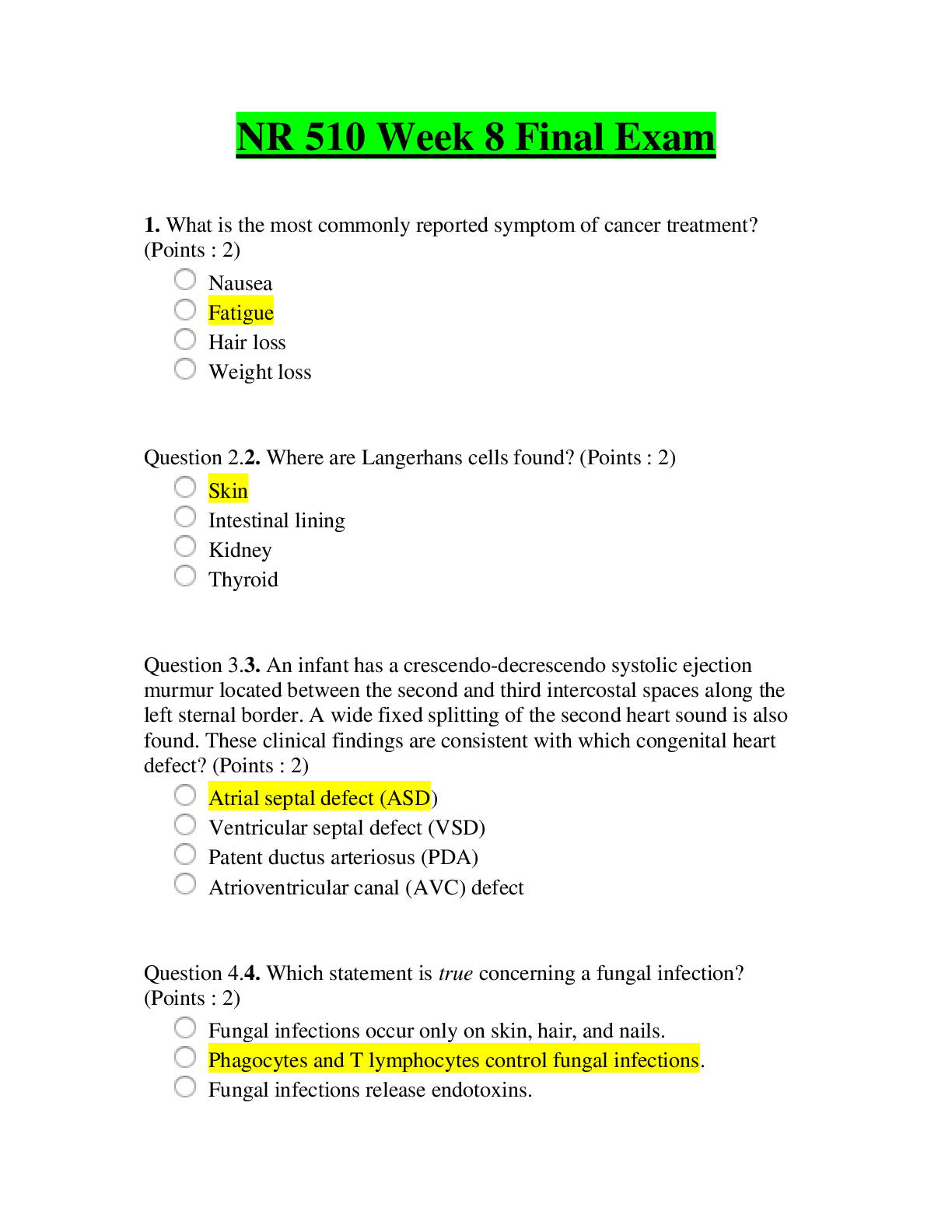Health Care > QUESTIONS & ANSWERS > ATI Acute Respiratory Failure Test Bank, Chapter 14: Chamberlain College of Nursing NR 341 (A Grade (All)
ATI Acute Respiratory Failure Test Bank, Chapter 14: Chamberlain College of Nursing NR 341 (A Graded) Latest Questions and Complete Solutions
Document Content and Description Below
ATI Acute Respiratory Failure Test Bank, Chapter 14: Chamberlain College of Nursing NR 341 (A Graded) Latest Questions and Complete Solutions Chapter 14: Acute Respiratory Failure Test Bank MULTI... PLE CHOICE 1. The nurse is caring for a patient with acute respiratory failure and identifies “Risk for Ineffective Airway Clearance” as a nursing diagnosis. A nursing intervention relevant to this diagnosis is: a. Elevate head of bed to 30 degrees. b. Obtain order for venous thromboembolism prophylaxis. c. Provide adequate sedation. d. Reposition patient every 2 hours. ANS: D Repositioning the patient will facilitate mobilization of secretions. Elevating the head of bed is an intervention to prevent infection. Venous thromboembolism prophylaxis is ordered to prevent complications of immobility. Sedation is an intervention to manage anxiety, and administration of sedatives increases the risk for retained secretions. DIF: Cognitive Level: Analysis REF: Nursing Care Plan OBJ: Formulate a plan of care for the patient with acute respiratory failure. TOP: Nursing Process Step: Intervention MSC: NCLEX: Physiological Integrity 2. The patient with acute respiratory distress syndrome (ARDS) would exhibit which of the following symptoms? a. Decreasing PaO2 levels despite increased FiO2 administration b. Elevated alveolar surfactant levels c. Increased lung compliance with increased FiO2 administration d. Respiratory acidosis associated with hyperventilation ANS: A Patients with ARDS often have hypoxemia refractory to treatment. Surfactant levels are often diminished in ARDS. Compliance decreases in ARDS. In early ARDS, hyperventilation may occur along with respiratory alkalosis. DIF: Cognitive Level: Comprehension REF: p. 410 OBJ: Describe the pathophysiology of ARF. TOP: Nursing Process Step: Assessment MSC: NCLEX: Physiological Integrity [Show More]
Last updated: 1 year ago
Preview 1 out of 29 pages
 Latest Questions and Complete Solutions.png)
Buy this document to get the full access instantly
Instant Download Access after purchase
Add to cartInstant download
We Accept:

Reviews( 0 )
$13.00
Document information
Connected school, study & course
About the document
Uploaded On
May 22, 2021
Number of pages
29
Written in
Additional information
This document has been written for:
Uploaded
May 22, 2021
Downloads
0
Views
56

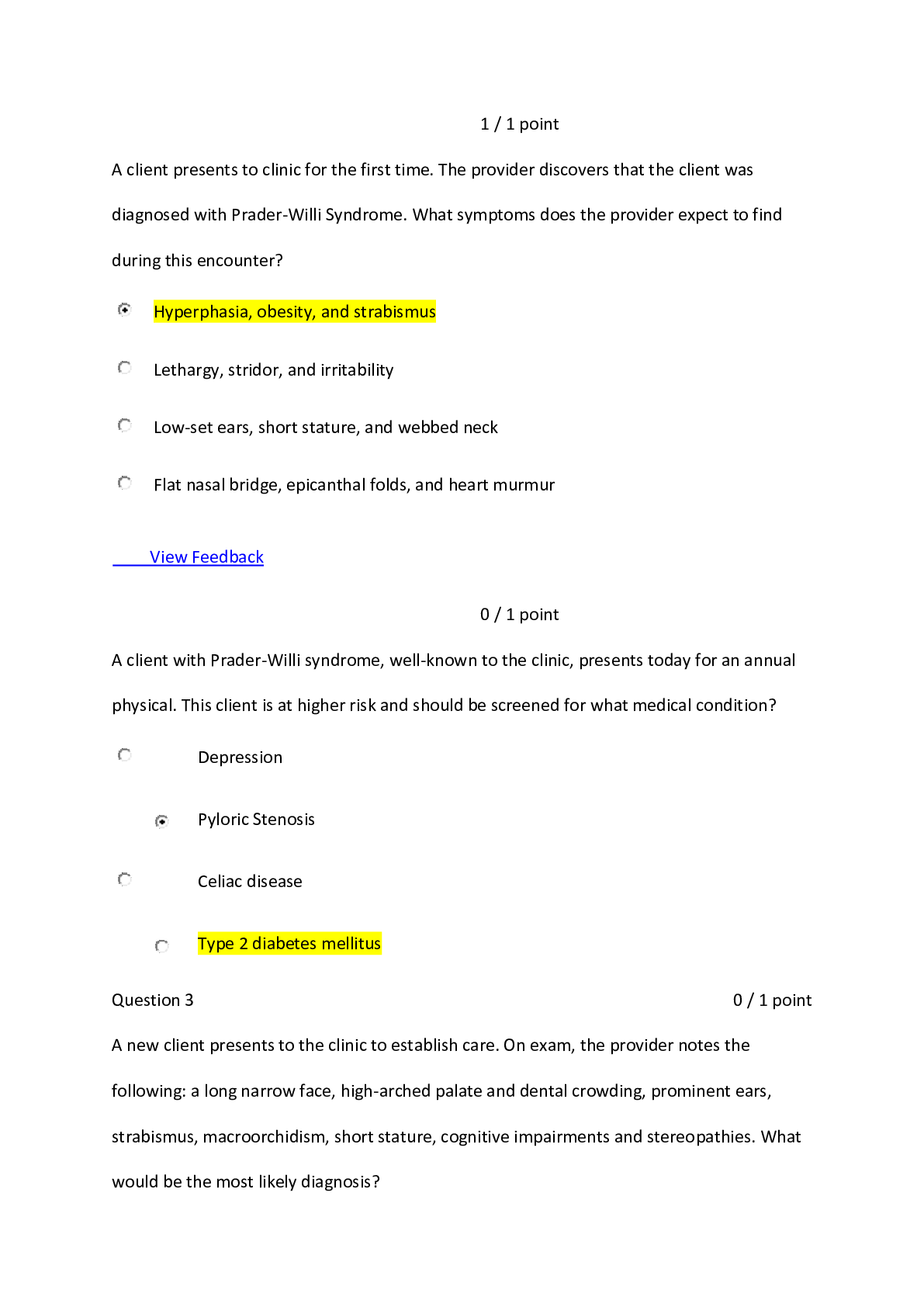
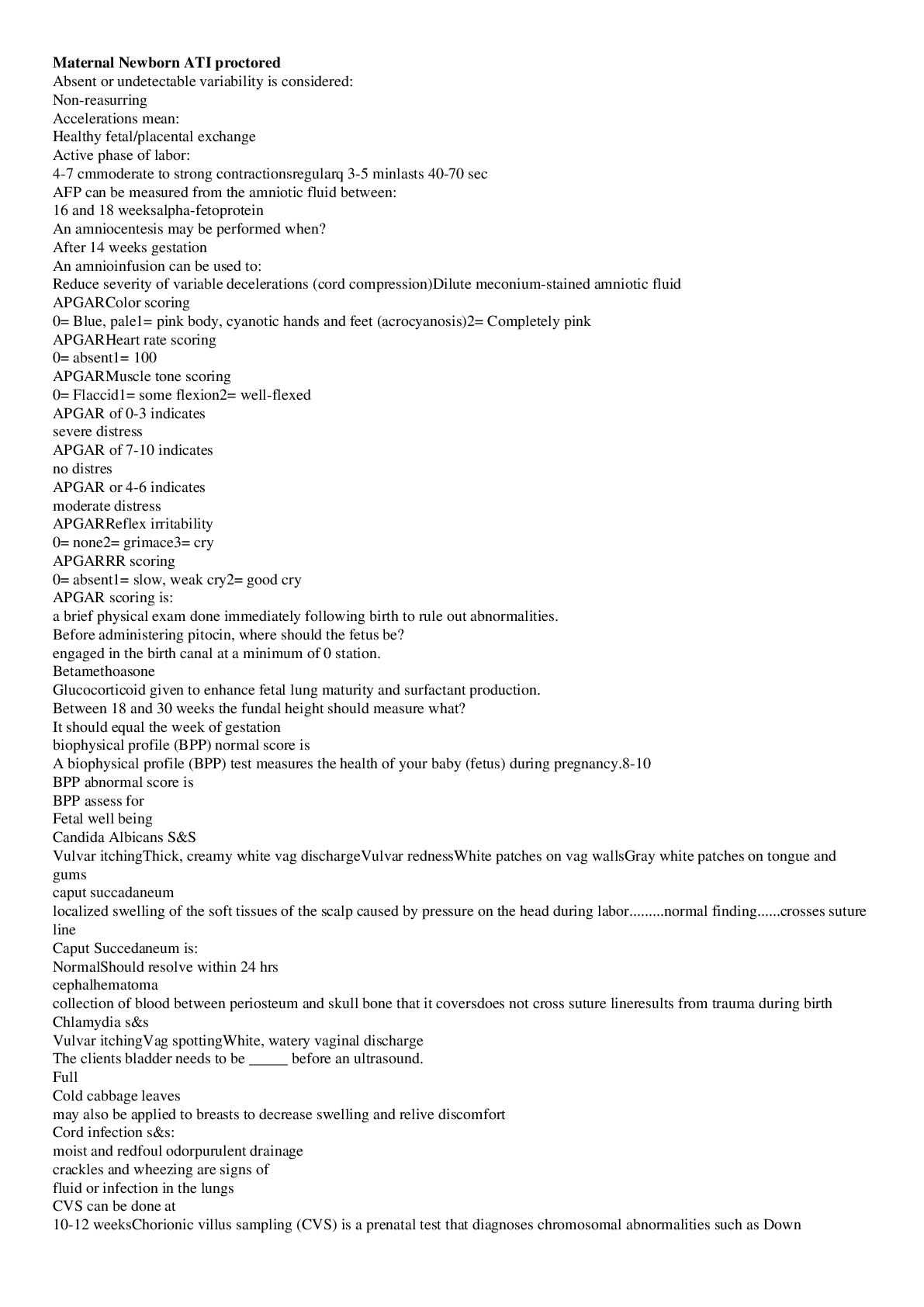
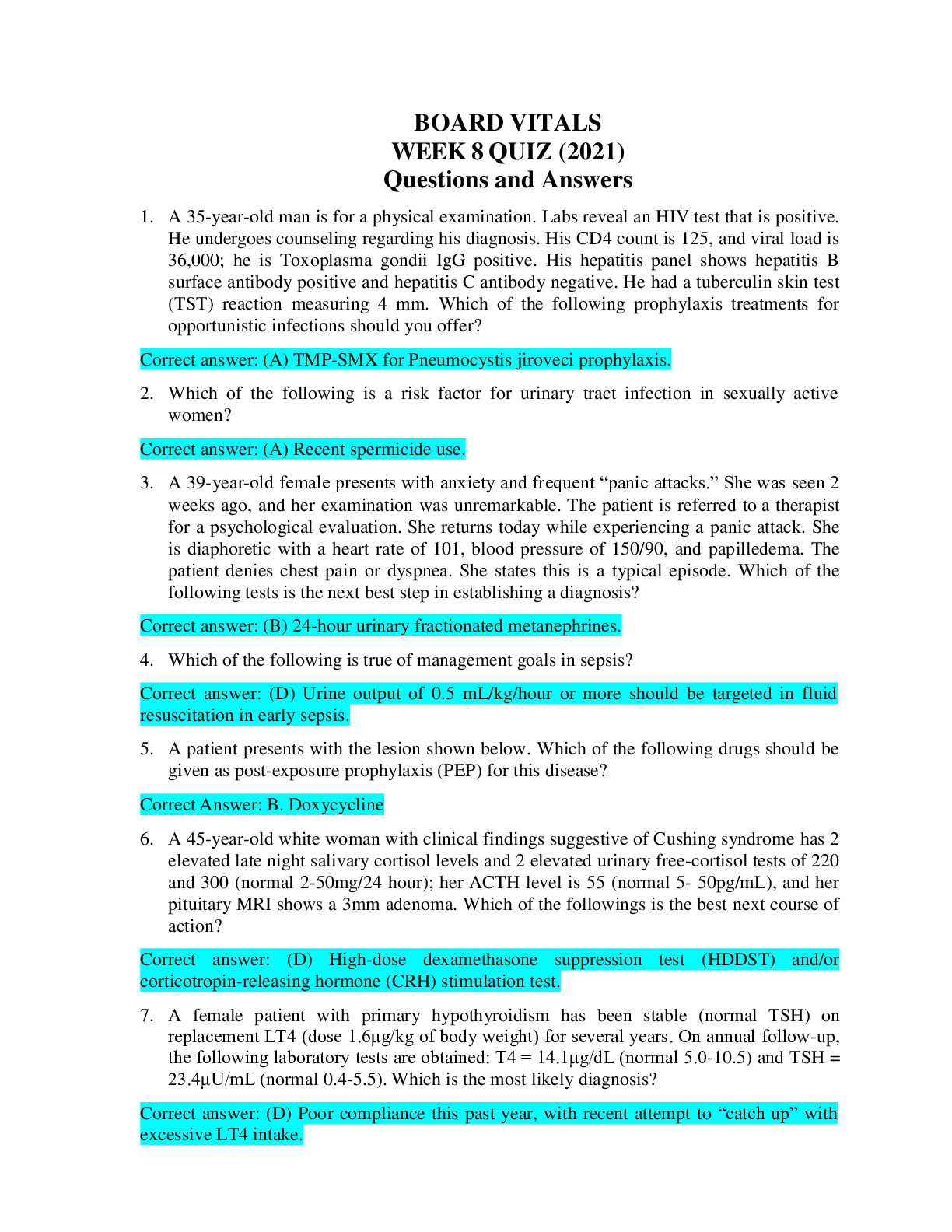

, (A Grade), Questions and Answers, All Correct Study Guide, Download to Score A.png)
, Questions and Answers, All Correct Study Guide, Download to Score A.png)
, Latest Questions and Answers with Explanations, All Correct Study Guide, Download to Score A.png)
, Latest Questions and Answers with Explanations, All Correct Study Guide, Download to Score A.png)
, Latest Questions and Answers with Explanations, All Correct Study Guide, Download to Score A.png)
, Latest Questions and Answers with Explanations, All Correct Study Guide, Download to Score A.png)
 (Verified Answers, COMPLETE GUIDE FOR EXAM PREPARATION).png)
 All Correct Answers, Download to Score A.png)
